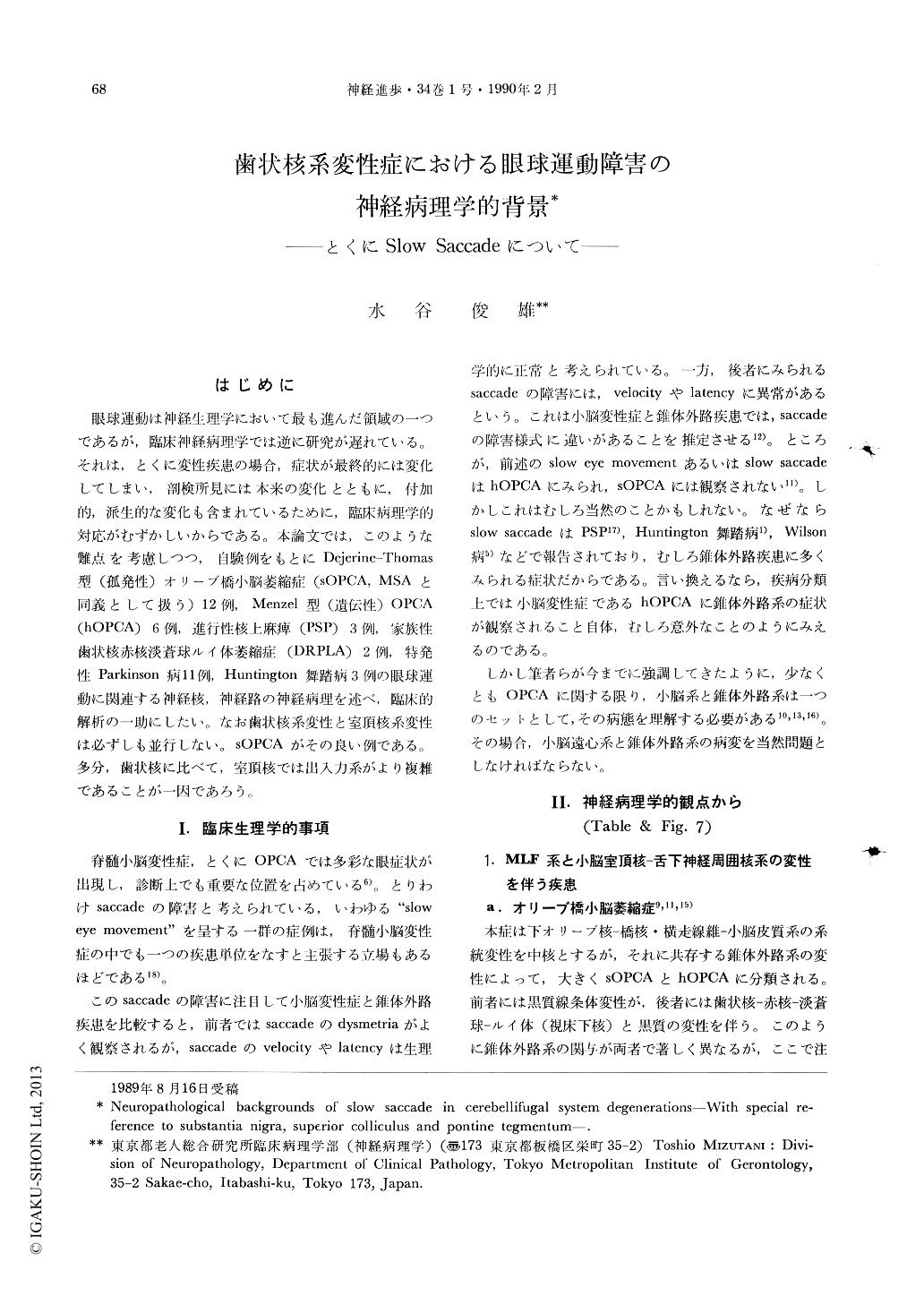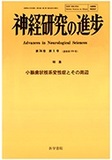Japanese
English
- 有料閲覧
- Abstract 文献概要
- 1ページ目 Look Inside
はじめに
眼球運動は神経生理学において最も進んだ領域の一つであるが,臨床神経病理学では逆に研究が遅れている。それは,とくに変性疾患の場合,症状が最終的には変化してしまい,剖検所見には本来の変化とともに,付加的,派生的な変化も含まれているために,臨床病理学的対応がむずかしいからである。本論文では,このような難点を考慮しつつ,自験例をもとにDejerine-Thomas型(孤発性)オリーブ橋小脳萎縮症(sOPCA,MSAと同義として扱う)12例,Menzel型(遺伝性)OPCA(hOPCA)6例,進行性核上麻痺(PSP)3例,家族性歯状核赤核淡蒼球ルイ体萎縮症(DRPLA)2例,特発性Parkinson病11例,Huntington舞踏病3例の眼球運動に関連する神経核,神経路の神経病理を述べ,臨床的解析の一助にしたい。なお歯状核系変性と室頂核系変性は必ずしも並行しない。sOPCAがその良い例である。多分,歯状核に比べて,室頂核では出入力系がより複雑であることが一因であろう。
Disturbance of saccade in eye movement (slow saccade) has been reported exclusively in extrapyramidal diseases, such as progressive supranuclear palsy (PSP), Huntington disease (HD) and Wilson's disease. Only one exception is hereditary or familial olivopontocerebellar atrophy (hOPCA) characterized by so-called “slow eye movement”, which was proposed by Wadia and Swani. However, OPCA of Dejerine-Thomas type (sOPCA), which is in the same nosological category, never show this peculiar symptom. Why slow saccade as a more familiar symptom in extrapyramidal diseases is found in cerebellar degeneration?

Copyright © 1990, Igaku-Shoin Ltd. All rights reserved.


